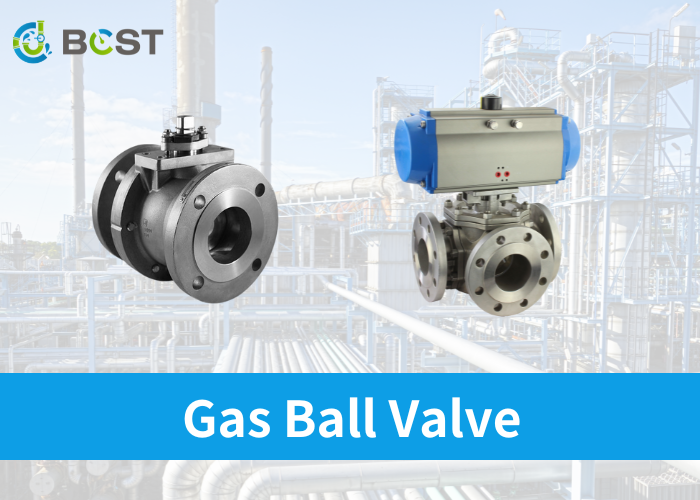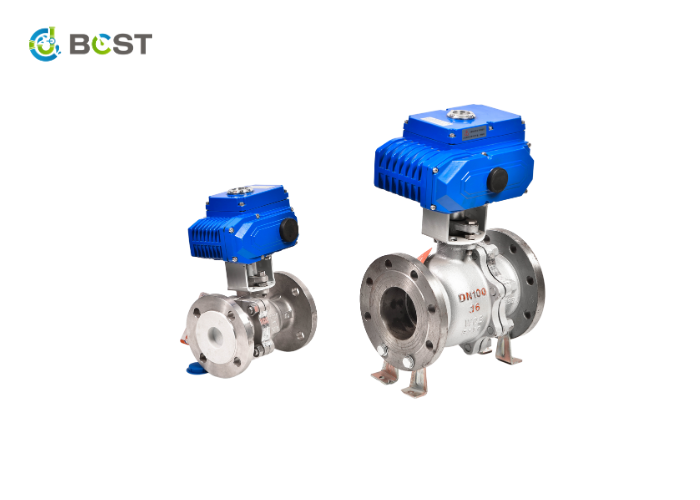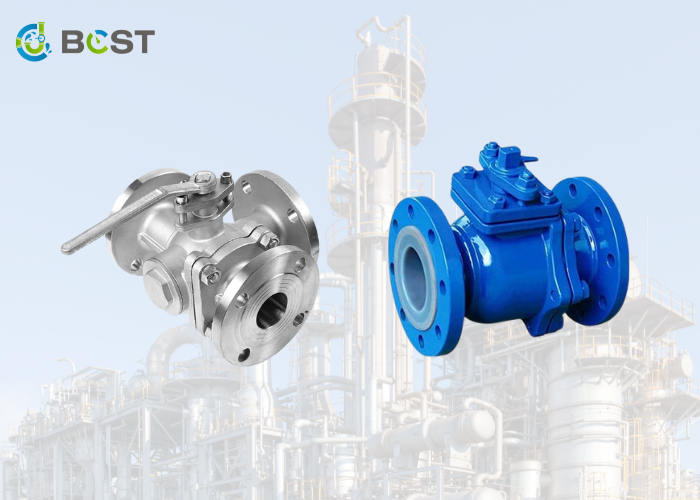
When handling gases in industrial settings, equipment choice is vital in ensuring safety and efficiency. In this blog, we’ll delve into gas ball valves, exploring essential considerations for their use in demanding industrial environments.
These valves are essential in combustible gas service in a variety of industrial applications. They are used in natural, manufactured, and liquefied petroleum gas pipelines.
The characteristics, selection criteria, use, and industrial standards of gas ball valves are discussed in this article.
What is a Gas Ball Valve?
A gas ball valve is a quarter-turn flow control device that offers better performance, shut-off-off, and sealing characteristics than conventional ball valves. Gas ball valves, unlike high-pressure, high-temperature water service ball valves, have a small and lightweight valve body design that boosts their versatility and makes them appropriate for a variety of applications.
Gas ball valves are often employed in flammable fluid transport applications and piping systems such as hydrocarbons, liquefied petroleum gas (LPG), natural gases, and chemical vapors. These valves are also ideal for boilers, furnaces, gas stoves, and residential and commercial water heaters.
Gas ball valves are used in flow control systems that work at high pressures and temperatures. Given the combustible nature of most working fluids, preventing leakage at the valves is vital. Sealing and protection against fugitive emissions rely on metal-seated gas ball valves or PTFE seats.
Advantages of Gas Ball Valves
- Excellent Shut-Off Characteristics: The valves open and close quickly in response to the pressure conditions of the pipeline. It’s critical for avoiding backflows and pollution.
- Versatile and Efficient:Gas ball valves are versatile and efficient because of their compact size, which allows them to be used in a variety of industrial applications. They require simple actuation systems and operate at low torque.
- Durability and Ease of Maintenance: These valves provide good flow control over their service life and require minimal maintenance.
CSA Ratings and Gas Ball Valves
Approval is required from the Canadian Standards Association (CSA) before using gas ball valves for combustible fluid service. The valves are rated by the organization based on their application areas and country-specific standards. CSA is recognized by the Occupational Safety and Health Administration (OSHA) and the American National Standards Institute (ANSI) in the United States.
Valves with CSA ratings can be utilized in a variety of sectors around the United States. Gas ball valves developed for outdoor fluid applications in the United States are rated BRS125G, whereas in Canada they are rated CAN 3.16.
The CSA ratings for indoor applications are the same in the United States and Canada. Any ball valve with the 12 PSI and 5G- ratings is only for indoor gas applications. The 12 PSI rating indicates that the valve will be installed on the appliance. 5G valves are used in household pipe systems. Indoor gas systems have a lower operating pressure than outdoor piping systems.
All lever-operated gas shut-off valves must meet CSA 3.16-15 standards. These are manually controlled metallic gas ball valves with flanged, threaded, or welded ends. Their operating temperatures range from -1048°F (-600°C) to 3272°F (1800°C), with a maximum pressure limit of 125PSI. These valves are appropriate for natural gas, liquid petroleum gas, and manufactured gas services.
Valves with CSA 3.16-15 ratings can be utilized in sewage treatment plants for methane gas service. Nevertheless, they are likely to suffer the deleterious effects of pollutant collection around the valve body. Gas ball valves should not be used in piping systems that contain traces of hydrogen sulfide (sour gas).

Special Features of Gas Ball Valves
Gas ball valves offer distinct characteristics that make them better adapted to the specific demands and requirements of gas applications, assuring safe and efficient operation.
- Fire-safe design:Gas ball valves are frequently designed with a fire-safe design to improve safety in the event of a fire or excessive temperature exposure. This design includes metal-to-metal seals and fire-resistant materials like graphite to prevent leakage and maintain sealing integrity even during high-temperature applications. Contact between metal surfaces, such as the ball and the valve body or the stem and the valve body, is typical of metal-metal seals. The metal-metal contact forms a strong seal that can tolerate high pressure and temperature, reducing the danger of leakage.
- Extended bonnet:The extended bonnet adds insulation and protection to the stem and packing, allowing the valve to function consistently under harsh temperatures.
- Anti-static design:Gas ball valves frequently have anti-static characteristics to avoid static charge buildup, which can be dangerous in gas applications. Examples are grounding springs or conductive materials, which dissipate any static charge that may accumulate during valve operation.
- Gas ball valves frequently have improved stem and seat sealing mechanisms to ensure tight shut-off and minimize gas leakage. Spring-loaded seats, live-loading of packing, or other sealing technologies to maintain integrity and limit the possibility of gas leakage are examples of such technologies.
- Yellow handle:Gas ball valves are distinguishable from ordinary valves by their yellow handles (Figure 1), indicating that they are CSA-approved and can be used with flammable gases (explained further below). Although the yellow handle is not required, it can assist in distinguishing gas ball valves from others.
- Pilot tap:Pilot taps on gas valves allow pressure gauges to control and monitor fluid pressure. These gauges aid in pressure testing to ensure that the system functions within acceptable pressure levels.
Testing Gas Ball Valves
Gas ball valves are utilized in applications with a wide range of temperature and pressure. To ensure operational safety, the valves are submitted to rigorous air tests to determine their efficiency under various working situations. Gas ball valves are tested to withstand 1.5 times their rated valve pressure, according to CSA standards. Gas ball valves with CAN 3.16 certification are intended for greater pressure ratings. They may be exempt from pressure tests in some situations.
The following gas ball valve ratings and corresponding test pressures are in PSIG (pounds per square inch gauge)
- CAN 3.16 rating — test pressure is 125PSIG
- BRS125G — test pressure is 188PSIG
- ½ PSI — 3 PSIG test pressure
- 5G — 7.5 G test pressure
Every gas ball valve has a different CSA approval rating. It is normal, however, to find valves with the same CSA ratings but varied pressure and temperature ratings. To achieve the basic CSA certification standards, valves for industrial processes with severe temperatures/pressure may require changes and further tests.
Types of Gas Ball Valves
Gas ball valves are built in various ways to suit their application areas. Fully welded ball valves are used in piping systems for natural gas service, clean gas supply, and compressed air. These valves are compact in size, easy to insulate, provide bi-directional tightness, and are maintenance-free. For maximum sealing, such ball valves are made of high-strength materials and have spring-loaded PTFE seals and O-rings.
Gas ball valves with flanged and welded ends are used in processes where the working medium must be fully open or closed. They are found at places such as heating pipeline crossings and heat exchanger stations.
Consider the installation locations when choosing gas ball valves. Are the valves intended to be used indoors or outdoors? Then, choose the right size to meet the process parameters.

Applications
Gas ball valves are used in a variety of sectors where the control, regulation, and isolation of various gases are necessary. Here are some examples of typical gas ball valve applications in specialized gas systems:
- Liquefied Petroleum Gas (LPG):Ball valves are commonly used in LPG systems for residential, commercial, and industrial applications. They ensure effective LPG control and safe shut-off, allowing for consistent use in distribution networks, storage tanks, cylinders, and equipment such as burners, heaters, and stoves.
- Industrial gas systems: Ball valves are critical in industrial gas systems such as oxygen, nitrogen and argon.They assist manufacturing processes, welding operations, and laboratory applications by providing safe and Provides reliable control of natural gas production plants, storage facilities and transmission and distribution networks.
- Medical gas systems:Gas ball valves are used in medical gas systems to distribute and regulate various gasses in medical facilities.
- Oil and gas industry:Gas ball valves manage the flow of natural gas, methane, and other hydrocarbons during extraction, processing, and distribution in wellhead systems, pipelines, refineries, petrochemical plants, and storage facilities.
Gas Ball Valve Selection Criteria
When selecting a gas ball valve for any industrial application, identify the system’s performance requirements. Flow rates, pressure, and temperature ranges will all be considered. Determine the chemical properties of the service medium. Due to their chemical inertness, gas ball valves with PTFE seats will be used in piping systems with traces of sour gas, as opposed to metal-seated valves, which are likely to corrode under identical conditions.
Gas ball valves used in important gas pipelines should be simple to maintain or require low maintenance. To avoid premature valve damage, the amount of abrasive media and impurities in the piping system should be kept to a minimum.






